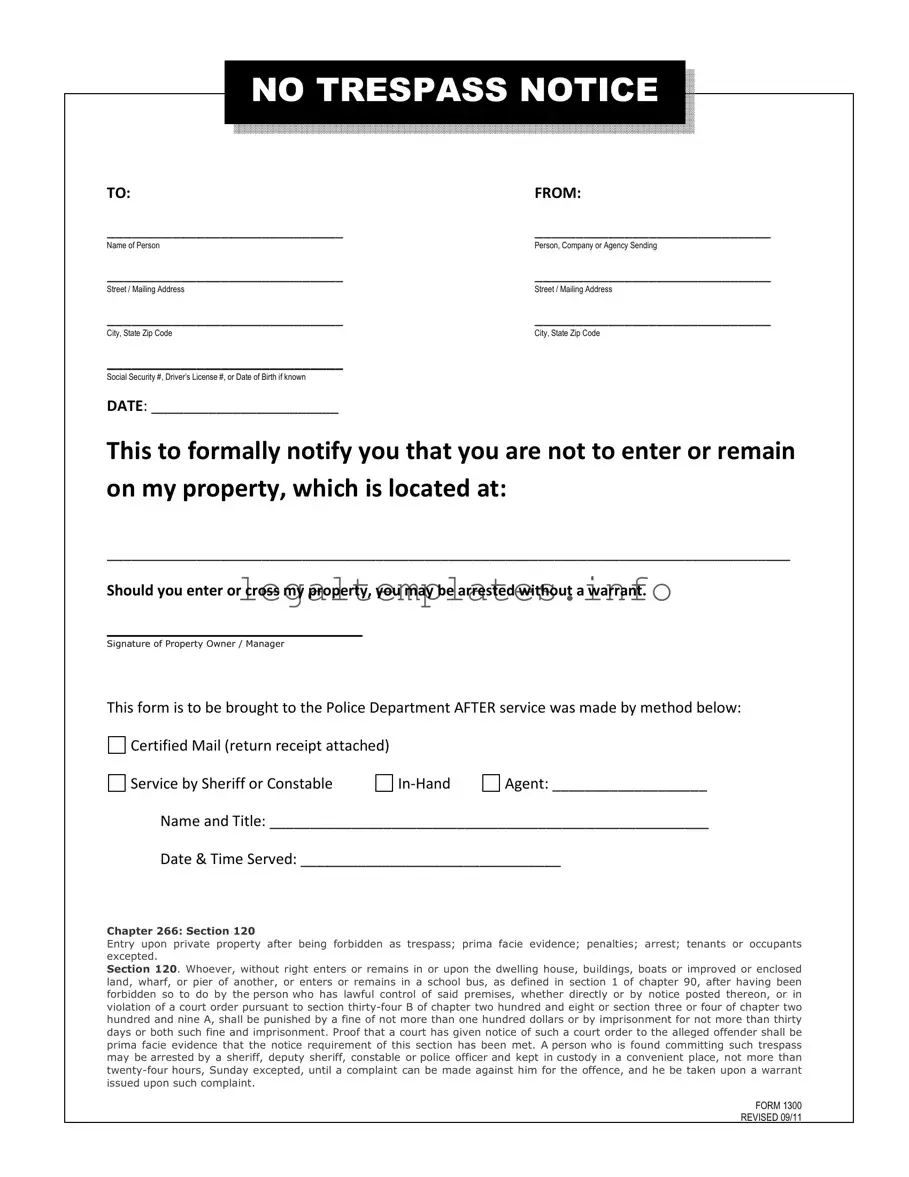What is a No Trespassing Letter and why is it used?
A No Trespassing Letter is a formal document used to notify an individual that they are not permitted to enter or remain on your property. It serves as a clear, legal notice that any unauthorized entry onto the property may lead to the individual's arrest. This letter is especially helpful in preventing unwanted visits or addressing disputes regarding property boundaries.
How can I serve a No Trespassing Letter to someone?
There are several methods to officially serve a No Trespassing Letter: through Certified Mail with a return receipt, by a Sheriff or Constable, or in-person by an Agent. It's important to choose a method that provides proof of service, which is critical in case of future legal disputes or if the issue escalates.
Do I need to inform local law enforcement after serving a No Trespassing Letter?
Yes, after serving the No Trespassing Letter, it is a good practice to bring the document to your local Police Department. Informing law enforcement helps ensure they are aware of the situation in case they need to respond to a trespassing incident. Remember to attach any proof of service, such as the return receipt, to the letter when you present it to the police.
What happens if someone ignores a No Trespassing Letter and trespasses anyway?
If someone ignores the No Trespassing Letter and enters your property, they can be arrested without a warrant, as they have been formally notified not to trespass. You should immediately report the incident to the local authorities, providing them with the copy of the No Trespassing Letter and proof of service.
Is it necessary to use specific legal language in a No Trespassing Letter?
While the letter should be clear and direct, it doesn't need to be filled with legal jargon. The most important aspect is that the message is understood: the individual is not to enter or remain on the specified property. Clearly stating the consequences of trespassing adds weight to the notice. However, consulting with a legal professional can ensure the letter meets all necessary requirements.
Can I draft a No Trespassing Letter myself, or should I have it prepared by an attorney?
Many people successfully draft their own No Trespassing Letters by following templates or guidelines. However, for the letter to be legally binding and effective, it needs to contain specific information and be properly served. If the situation is complex or if there's a high risk of legal action, consulting an attorney to prepare or review the letter is advisable.

